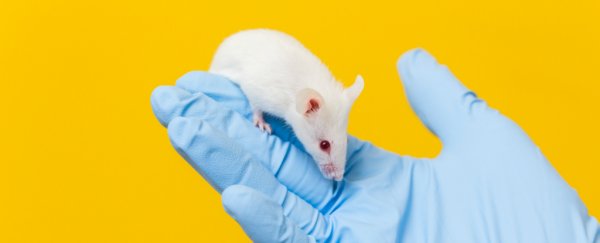Researchers have figured out how to reverse the symptoms of autism in mice, simply by turning on a gene like a light switch. Although the technique is a long way off being trialled in humans, the results provide hope that a similar approach could eliminate some of the most frustrating symptoms for people with autism, regardless of their age.
The scientists engineered mice to be born without a gene called Shank3 - which is missing in 1 percent of autism patients. They showed that by turning the gene back on, they could stop many symptoms associated with autism, such as the avoidance of social interaction and compulsive and repetitive behaviour. The most exciting part is that the technique worked in adults as well as juveniles, which shows that the brain can fix itself, even into adulthood.
"This suggests that even in the adult brain we have profound plasticity to some degree," said lead researcher Guoping Feng, professor of brain and cognitive science at MIT. "There is more and more evidence showing that some of the defects are indeed reversible, giving hope that we can develop treatment for autistic patients in the future."
Scientists have spent decades trying to untangle the maze of genes that contribute to the group of neurodegenerative disorders known as autism, which has become around 10 times more common over the past 40 years. And although much is still unknown, what they do know is that Shank3 is missing in around 1 percent of cases.
Shank3 codes for a protein that works in the synapses between brain cells, and is crucial to how they communicate with each other properly. When Feng and this team engineered mice without Shank3, they found that the brain cells of the mice didn't grow properly, particularly in a region known as the striatum, which is involved in the brain's reward system.
These mice also showed characteristic behaviours found in autism spectrum disorders, such as anxiety, compulsive repetition of tasks, and social avoidance.
But once the team switched this gene back on in mice aged between two and 4.5 months (well into adulthood in mouse years) they saw some of those behaviours dramatically reverse - the mice started to interact with each other more, and showed less repetitive grooming. The scientists were able to switch the gene on simply by giving mice the breast cancer drug tamoxifen.
On a cellular level, the researchers saw that there was an increase in the number of dendritic spines - the little branches that neurons use to communicate with each other - in the striatum, suggesting the the gene switch had actually caused the brain to rewire itself.
But although some of the symptoms were eliminated in adult mice, they continued to struggle with anxiety and motor coordination problems.
The team found these could only be reversed by switching Shank3 on earlier in life, just 20 days after birth. This suggests that there's a critical period during which these certain autism-like behaviours are still malleable.
The team is now trying to better understand when this is, in the hopes of figuring out how to reverse autism symptoms in a broader range of individuals, not only the 1 percent missing Shank3.
"Some circuits are more plastic than others," said Feng. "Once we understand which circuits control each behaviour and understand what exactly changed at the structural level, we can study what leads to these permanent defects, and how we can prevent them from happening."
There's a lot more work to be done before the treatment can be trialled in humans, and the mouse brain is in no way identical to our own. But a lot of the genetic pathways involved in the development of autism are known to be similar, and it's exciting to think that we may be able to use a similar approach to help people with autism manage their symptoms.
"The combination of behaviour, circuits, physiology, and genetics is state-of-the art," neuroscientist Gordon Fishell from New York University School of Medicine, who wasn't involved in the research, told MIT. "Moreover, Feng's demonstration that restoration of Shank3 function reverses autism symptoms in adult mice suggests that gene therapy may ultimately prove an effective therapy for this disease."
The research has been published in Nature.
